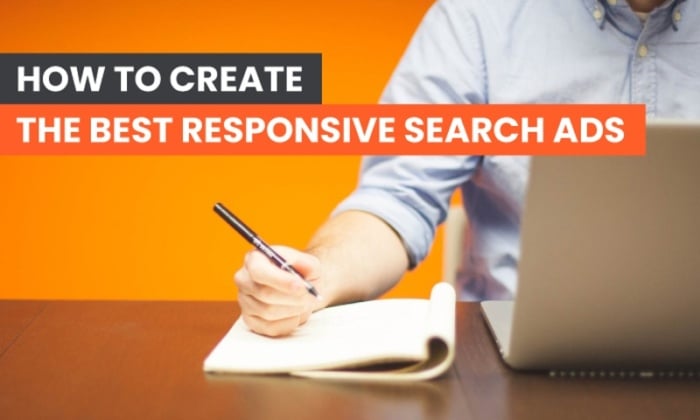Competitive Analysis: The Lean Guide (With Template)
However, the problem is that “traditional” competitive analysis is overkill for most businesses — it requires impractical data and takes too long to complete (and it’s very expensive if you choose to outsource). A solution to that is a...

A competitive analysis (or market competitive analysis) is a process where you collect information about competitors to gain an edge over them and get more customers. However, the problem is that “traditional” competitive analysis is overkill for most businesses — it requires impractical data and takes too long to complete (and it’s very expensive if you choose to outsource). A solution to that is a lean approach to the process — and that’s what this guide is about. In other words, we’ll focus on the most important data you need to answer the question: “Why would people choose them over you?”. No boring theory, outtakes from marketing history, or spending hours digging up nice-to-have information. In this guide, you will find: Our template consists of two documents: a slide deck and a spreadsheet. The Slide deck is the output document. It will help you present the analysis to your boss or your teammates. The spreadsheet is the input document. You will find tables that act as the data source for the charts from the slide deck, as well as a prompt to use in ChatGPT to help you with user review research. We didn’t focus on aesthetics here; every marketer likes to do slide decks their own way, so feel free to edit everything you’ll find there. With that out of the way, let’s talk about the process. The template consists of these six tasks: Going forward, we’ll explain why these steps matter and show how to complete them. Direct competitors are businesses that offer a similar solution to the same audience. They matter a lot more than indirect competitors (i.e. businesses with different products but targeting the same audience as you) because you’ll be compared with them often (e.g. in product reviews and rankings). Plus, your audience is more likely to gravitate towards them when considering different options. You probably have a few direct competitors in mind already, but here are a few ways to find others based on organic search and paid search ads. Our basis for the analysis was Landingi, a SaaS for building landing pages (we chose that company randomly). So in our case, we found these 3 direct competitors. Keyword overlap uncovers sites that target the same organic keywords as you. Some sites will compete with you for traffic but not for customers (e.g. G2 may share some keywords with Landingi but they’re a different business). However, in many cases, you will find direct competitors just by looking at this marketing channel. To double-check the choice of competitors, we also looked at who was bidding for search ads on Google. If someone is spending money to show ads for keywords related to what you do, that’s a strong indication they are a direct competitor. Once you’re done checking both reports, write down competitors in the deck. You can also take screenshots of the reports and add them to your deck to show the supporting data for your argument. Share of voice is a measure of your reach in any given channel compared to competitors. A bigger share of voice (SOV) means that your competitors are more likely to reach your audience. In other words, they may be promoting more effectively than you. In our example, we found that Landingi’s SOV was the lowest in both of these channels. Organic: And social media: Here’s how we got that data using Ahrefs and Brand24. Before we start, make sure you have a project set up in Ahrefs’ Rank Tracker. Now: It’s normal that the numbers don’t add up to 100%. SOV is calculated by including sites that compete with you in traffic but are not your direct competitors, e.g. blogs. We can also measure our share of voice across social media channels using Brand24. Consumers often choose solutions that offer the best value for money — simple as that. And that typically comes down to two things: After comparing our example company to competitors, we found that it goes head-to-head with Unbounce as the most feature-rich solution on the market. Here’s how we got that data. User reviews can show incredibly valuable insight into your competitors’ strong and weak points. Here’s why this matters: Here’s a sample from our analysis: And here’s how we collated the data using ChatGPT. Important: repeat the process for each competitor. businesses sometimes solicit five-star reviews, whereas dissatisfied customers tend to leave one-star reviews in a moment of frustration. The most actionable feedback usually comes in between. There’s a faster alternative, but it’s a bit more advanced. Instead of copy-pasting, you can use a scraping tool like this one to get all reviews at once. The downside here is that not all review sources will a have scraping tool available. Lastly, we’ll see how easy it is to actually buy your products, and compare the experience to your competitors. This is a chance to simplify your checkout process, and even learn from any good habits your competitors have adopted. For example, we found that our sample company had probably nothing to worry about in this area — they ticked almost all of the boxes. Here’s how to complete this step: This is the part of the presentation where you sum up all of your findings and suggest a course of action. Here are two examples: We encourage you to take your time here and think about what would make the most sense for your business. Tip It’s good to be specific in your conclusions, but don’t go too deep. Competitive analysis concerns many aspects of the business, so it’s best to give other departments a chance to chime in. Just because your competitors have a few unique features doesn’t necessarily mean you need to build them too. A competitive analysis is one of the most fruitful exercises in marketing. It can show you areas for improvement, give ideas for new features, and help you discover gaps in your strategy. It wouldn’t be an exaggeration to say that it’s fundamental to running a successful business. Just don’t forget to balance “spying” on your competitors with innovation. After all, you probably don’t want to become an exact copy of someone else’s brand. In other words, use competitive analysis to keep up with your competitors, but don’t let that erase what’s unique about your brand or make you forget your big vision. Got comments or questions? Ping me on X. 


Look at keyword overlap

See who’s advertising




Organic share of voice

 On the next screen, set the country with the most important market for your business and set the filters like this:
On the next screen, set the country with the most important market for your business and set the filters like this: Select keywords that sound most relevant to your business (even if you don’t rank for them yet) and Add them to Rank Tracker.
Select keywords that sound most relevant to your business (even if you don’t rank for them yet) and Add them to Rank Tracker.  Go to Rank Tracker, open your project, and look for Competitors/Overview. This report will uncover automatically calculated Share of Voice.
Go to Rank Tracker, open your project, and look for Competitors/Overview. This report will uncover automatically calculated Share of Voice.  Add the numbers in corresponding cells inside the sheet and paste the graph inside the slide deck.
Add the numbers in corresponding cells inside the sheet and paste the graph inside the slide deck. 
Social share of voice
 Take a screenshot of the SOV charts and paste them into the slide deck. Make sure the charts are set to “social media”.
Take a screenshot of the SOV charts and paste them into the slide deck. Make sure the charts are set to “social media”.

 Enter the price of the cheapest plan (excluding free plans).
Enter the price of the cheapest plan (excluding free plans).  Once finished, copy the chart and paste it inside the deck.
Once finished, copy the chart and paste it inside the deck. 
 Go to G2, Capterra, or Trustpilot and find a competitor’s reviews with ratings from 2 – 4 (i.e. one rating above the lowest and one below the highest possible). Reason:
Go to G2, Capterra, or Trustpilot and find a competitor’s reviews with ratings from 2 – 4 (i.e. one rating above the lowest and one below the highest possible). Reason: Paste the graphs into the deck. If you want the graphs to look different, don’t hesitate to ask the AI.
Paste the graphs into the deck. If you want the graphs to look different, don’t hesitate to ask the AI. 
Final thoughts

 Koichiko
Koichiko 
































